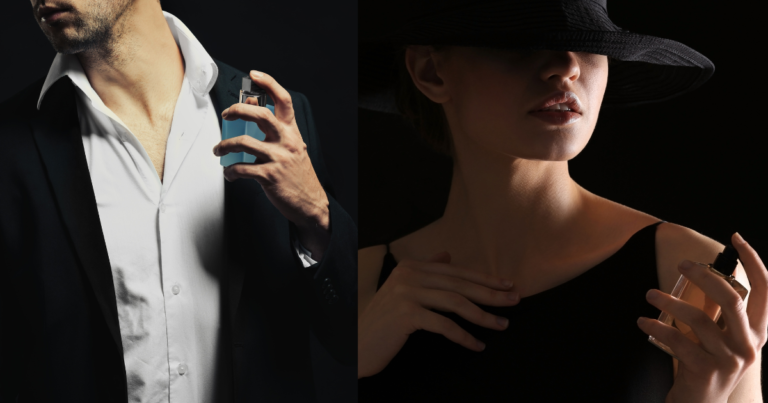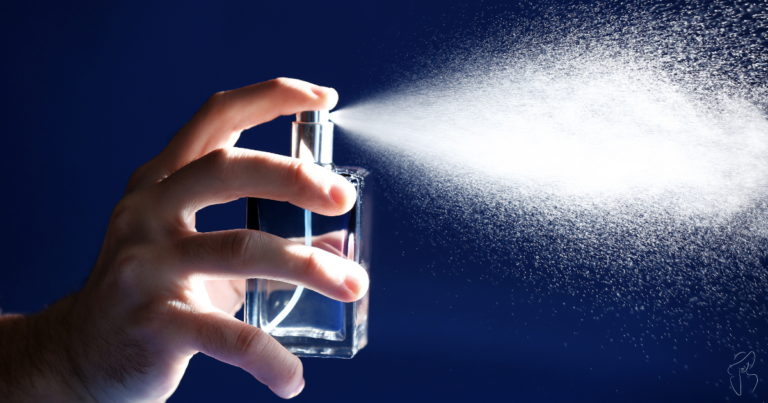Learn Fragrance Secrets Like a Pro and Discover Your Signature Scent!

Perfume, a captivating mixture of aromatic substances, has the strength to transport us to exceptional worlds, evoke feelings, and leave a lasting influence. Throughout records, these fragrant elixirs have been coveted for his or her splendor and mystery. But with limitless options available, navigating the sector of fragrance may be daunting. This guide empowers you to with a bit of luck discover the charming global of scents, recognize the distinctive perfume types, and discover your signature perfume.
The Essence of Perfume
Perfume is a symphony of fragrant components, meticulously crafted to create a harmonious and long-lasting heady scent.Here’s a breakdown of its key elements:
- Essential Oils: The heart and soul of perfume, extracted from aromatic plants, flowers, fruits, and spices. These concentrated oils deliver the fragrance’s character.
- Aroma Compounds: Synthetic molecules that replicate or enhance natural scents, offering a wider olfactory palette.
- Fixatives: Play a crucial role in ensuring the fragrance lasts. These materials slow down the evaporation of essential oils, allowing the perfume to develop and linger.
- Solvents: Typically alcohol, act as carriers for the essential oils and aroma compounds, facilitating their application and diffusion.
The Perfume Pyramid: Fragrance Types and Their Lasting Power
The world of perfume can be delightful, but navigating its intricacies can be daunting. One crucial aspect is fragrance concentration, which dictates the intensity and longevity of a scent.
Tenacity:The tenacity of a perfume refers to its ability to linger or last on the skin after application. It’s basically how long you can expect to smell the fragrance after you put it on.
This guide will unveil the five main types of perfumes, arranged from the most concentrated to the lightest:
1.Extrait de Parfum (Extrait)
Reigning supreme is the Extrait de Parfum, also known as pure perfume. With the highest essential oil concentration (20-30%), it offers the most potent and long-lasting fragrance experience, gracing your presence.Due to its richness, a single spritz often suffices, making it a luxurious choice.
- Tenacity of Extrait de Parfum Extrait de Parfum is also known for its exceptional tenacity, meaning its scent lingers for a very long time. A single application can be noticeable for well over 12 hours, making it a perfect choice for those who want their fragrance to last throughout the day or evening. Even after the initial scent fades, the perfume’s base notes can linger for an even longer time, offering a subtle reminder of your fragrance.
2.Eau de Parfum (EDP)
Following closely is Eau de Parfum, a popular selection boasting a 10-20% concentration of essential oils. This translates to a powerful scent that lingers for a long time. EDPs are perfect for everyday wear and special occasions alike.
- Tenacity/Endurance of Eau de Parfum: While not quite as tenacious as Extrait de Parfum, EDPs still offer impressive longevity. With proper application, a spritz of your favorite EDP can leave a noticeable and pleasant fragrance trail for a solid 8 hours. The base notes, in particular, can linger even longer, providing a subtle and sophisticated scent throughout the day.
3.Eau de Toilette (EDT)
The Eau de Toilette holds the middle ground in terms of concentration (5-15% essential oils) and moderate longevity.Lighter and more refreshing than EDPs, they are ideal for daytime wear or those who prefer a subtler fragrance.
- Modest Tenacity: While not as long-lasting as EDPs or Extraits, EDTs provide a noticeable fragrance for a respectable 4-7 hours. This makes them a good choice for everyday wear or when a more subtle scent is desired. The lighter concentration also means the scent won’t overpower those around you. EDT’s fragrance profile tends to be more centered on the top and middle notes, so the initial scent will be brighter but may fade a bit quicker.
4.Eau de Cologne (EDC)
Eau de Colognes are known for their invigorating and citrusy scents. Containing a mere 2-4% essential oil concentration, they offer a refreshing burst of fragrance that lasts for shorter intervals . Perfect for a quick pick-me-up or layering with other scents.
- Tenacity/Fleeting Fragrance: Due to their low essential oil concentration, Eau de Colognes (EDCs) have a shorter fragrance lifespan compared to other perfume types. They typically last for 2-3 hours, making them ideal for a quick refresh or for layering with other fragrances. The upside is that the lighter scent won’t overpower, and you can reapply throughout the day without feeling too heavy-handed.
5.Eau Fraiche (EF)
The Eau Fraiche is the lightest concentration (1-3% essential oils) on our list. Offering a delicate and fleeting scent experience (lasting up to 2 hours), they are ideal for those with scent sensitivities or for layering with stronger fragrances.
- Tenacity/Subtle Fragrance Whisper: Eau Fraiche (EF) offers a delightful whisper of fragrance, perfect for those with scent sensitivities or for layering. Due to the low essential oil concentration (1-3%), the scent is delicate and fades within a couple of hours. This ephemeral quality makes it a great choice for anyone who prefers a touch of fragrance without the commitment of a long-lasting perfume.
Remember, these are general guidelines. Fragrance longevity can also be influenced by your skin type, the climate, and even your diet. So, experiment and find the perfect scent concentration that complements your style and preferences!
The Fragrant Symphony: Unveiling the Layers of a Perfume
Fragrance notes are the individual scent components that combine to create a perfume’s overall aroma. These notes or layers are typically classified into three categories: top notes, heart notes (also known as middle notes), and base notes.
Top Notes
The first impression of a fragrance, light and volatile molecules that evaporate quickly.
- They are responsible for the initial burst of scent you experience when you first apply a perfume.
- They tend to fade within the first 15-30 minutes.
- Common top notes include citrus scents:
| Lemon, Bergamot, Grapefruit Herbal scents (Lavender, mint) Light fruits (Apple, Pear) |
Heart Notes (Middle Notes)
Emerge after the top notes fade and form the core of the fragrance.
- They are often described as the heart or soul of the perfume, and they can last for 2-4 hours .
- Common heart notes include floral scents:
| Rose Jasmine Lily of the Valley Spicy notes (Cinnamon, Clove, Cardamom), Some Fruits (Peach, Apricot). |
Base Notes
The most long-lasting notes in a fragrance, providing depth and richness.
- Base notes typically emerge after the middle notes fade and can linger for the longest duration (4-8 hours or more).
- Common base notes include:
| Musks (White Musk, Ambrette) Woody notes (Sandalwood, Cedarwood, Vetiver) Amber Vanillas |
The beauty lies in the way these notes blend and transition over time. The top notes entice you initially, then seamlessly give way to the middle notes that offer a more complex and nuanced aroma.
Finally, the bottom notes leave an enduring impression, anchoring the entire perfume experience. The interaction of these special fragrance notes creates a complicated and evolving fragrance. The pinnacle notes provide the preliminary influence, the coronary heart notes shape the center of the perfume, and the bottom notes offer depth and sturdiness. By expert fragrance notes, you can pick perfumes that healthy your options and create a signature heady scent that displays your persona.
Conclusion
In conclusion, navigating the world of perfume can be delightful, but with so many choices, it can also be daunting. This guide has equipped you with the knowledge to confidently explore the world of scents. You learned about the key components of perfume, including essential oils, aroma compounds, fixatives, and solvents.
Understanding fragrance concentration is crucial. The five main types of perfumes were introduced, ranging from the most concentrated Extrait de Parfum to the lighter Eau Fraiche. You learned how concentration impacts fragrance intensity and longevity.
Fragrance notes were explored, revealing their role in creating a perfume’s overall aroma. Top notes provide the initial impression, heart notes form the core, and base notes offer depth and linger the longest. By understanding these elements, you can choose perfumes that suit your preferences and create a signature scent that reflects your personality.
So, the next time you encounter a perfume counter, you’ll be armed with the knowledge to confidently explore the captivating world of scents and discover a fragrance that becomes uniquely yours.







